
从即日起,“Linux 中国” 这个社区,包括它的主网( https://linux.cn/ )、公众号、视频号,以及下属的《硬核观察》栏目,将无限期停止更新和运营。

? 德国铁路公司招聘 Windows for Workgroups 3.11 管理员
? 带弹幕的盗版《武林外传》视频被上传到 NPM
? 由于法律原因,连 CentOS SIG 都无法为 RHEL 制作软件包
»
»

我们将继续探索神经网络,并使用数据集来训练模型。

以下是使用 WSL 关闭在 Windows 内运行的 Linux 系统的不同方法。
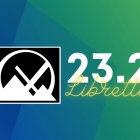
最新的 MX Linux 23.2 小版本更新带来了基本的改进和新增功能。

? 网络上最古老的软件存档库之一即将关闭
? 日本的部分官方文件将不再需要使用软盘提交
? GPS 干扰已成为航空业的主要飞行安全问题之一
»
»

在 Linux 中,你可以根据自己的需要创建高级网络设置,如网络绑定或网卡聚合、VLAN 标记和桥接。
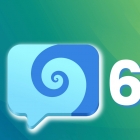
Matrix 用户可以升级 Fractal 6 了!

使用 VLC 媒体播放器播放和管理字幕的新手指南。
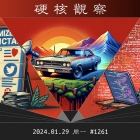
? X 计划在奥斯汀建立内容审核总部
? 利用 AI 来优化 Python 代码的性能
? 美国汽车行业试图取消调幅收音机
»
»

仅仅开源还不足以实现开放,还需开放标准和建立共识。

? 苹果公司的第三方应用商店招致广泛批评
? 苹果的大语言模型出现在新的 iOS 代码中
? Chrome 推出 Windows on Arm 版本
»
»

你可能会发现,Snap 版本的 Steam 并不如你期待的那样好,你怎么看?
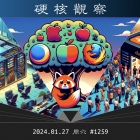
? 苹果公司将允许第三方浏览器引擎,但 Firefox 非常失望
? 红帽将修改其云计算 RHEL 定价
? Linux 应用商店 Flathub 现在拥有超过一百万活跃用户
»
»

Wine 的这个新版本正在为未来做好准备!

Obsidian 知识库工具的真正威力在于链接。学习使用它。

? 苹果公布第三方应用商店的详细规则
? NASA 的机智号火星直升机任务结束
? 谷歌云为 Hugging Face 开发者免费提供 AI 算力
»
»

Linux 现在有了 Mozilla Firefox 的新原生包。

? Mozilla 指责谷歌、微软、苹果妨碍公平竞争
? Zed 代码编辑器现已开源
? Macintosh 诞生 40 周年
»
»

使用 GNOME 的 Nautilus 文件搜索,通过这些方便的提示改善您的文件搜索体验,成为一名专业的搜索者。
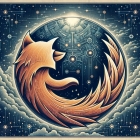
让我们探究一下这款有趣的 Firefox 分支产品 - Floorp。

? 研究发现人类仍比人工智能便宜
? Chrome 将内置人工智能写作助手
? FreeBSD 开发者讨论在其基本系统中使用 Rust
»
»

1 月 20 日,我们在武汉未来科技城成功举办了 LLUG 武汉活动。

在本文中我们将继续学习概率论的知识。

? 惠普称病毒能通过墨盒传播而禁止使用第三方墨盒
? 快递公司的人工智能聊天机器人失控
? 30TB 硬盘即将问世
»
»

没错,即使是 GNOME 登录屏幕也可以自定义。这里有一个方便的实用工具,可以让事情变得更简单。

? 得益于人工智能驱动的狂热,标普 500 指数创历史新高
? 龙架构为 Linux 6.8 提供初步 Rust 内核支持
? NPM 用户每周下载 21 亿个过时软件包
»
»

现在,它的功能分散在无数供应商之间。

本文重点为从事各种 Fedora 文档仓库的贡献者介绍 Kate 的主要功能。

? 海尔要求开发者下架开源的家庭助理插件
? ReiserFS 作者在狱中回应被内核移除
? 谷歌推出画圈即搜索的“画圈搜索”功能
»
»

大家是怎么看待 Git 提交的?

? 扎克伯格的新目标是创造人工通用智能
? 搜索引擎在与 SEO 的战争中败北
? 红帽工程师开发利用 AI 识别构建错误的工具
»
»

Linux 中的 free 命令可以帮助你深入了解系统内存(RAM)的使用情况等。下面介绍如何充分利用它。

? ChatGPT 几乎没有提升必应搜索市场份额
? 谷歌明确警告 Chrome 隐身模式仍然会被跟踪
? Rust 编写的 Linux 调度程序可提高游戏性能
»
»

Canonical 公布了将延长 Ubuntu LTS 的软件更新。而且,直到现在我们才知道……

? 苹果公司首次在全球智能手机市场占据首位
? 美国国会要求 NASA 必须打败中国重返月球
? 摩根大通每天遭受 450 亿次网络攻击
»
»

博通致 VMware:“我还没干完!”

这是一个简约直观的基于 Arch 的发行版,无需繁琐的开箱定制。

? LG 洗衣机每天上传近 4GB 的数据?
? 中国的芯片进口大幅下降,创下历史最大降幅
? openSUSE Leap 16 将基于 ALP
»
»

不知道在使用哪个初始化系统?以下是方法。
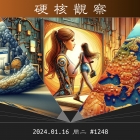
? AI 女友涌入 OpenAI 的 GPT 商店
? 苹果公司将为欧盟单独推出应用商店
? 无 2FA 的 GitLab 账户可能被攻击者接管
»
»

深度用户挖掘到实验性 “Cowriter” 功能的证据。

Audacity 现在配备了新的 AI 工具。

? 联网的扭矩扳手也能被入侵
? Git 项目考虑使用 Rust 代码开发
? 开源社区在 2024 年仍在继续支持 Flash 播放器
»
»
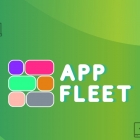
开源工作区自动化工具。听起来不错!

如果你的代码是用 Python 编写的,你应该使用 Textual 来帮助你编写 TUI(文本用户界面)。

? OpenWrt 项目准备推出开放路由器
? Linux 设备正遭受前所未有的矿工蠕虫攻击
? 高通称引领科技需要 “在中国做大生意”
»
»

下面是一些极好的建议来让你的 Linux 系统游戏体验更上一层楼。

? OpenAI 悄然删除禁止将 ChatGPT 用于 “军事和战争” 的禁令
? 博通抛弃 VMware 云服务提供商
? Linux 4.14 LTS 在六年后迎来生命终结
»
»

正在寻找开源的 ChatGPT 替代方案?我们已经为你挑选了最优选项,供你一览。
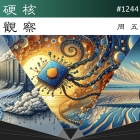
? 美国讨论限制中国获取 RISC-V 技术
? 谷歌取消迁出其云服务的费用
? Linux 内核 6.8 遭遇“可怕的性能回归”
»
»

这次,我们从黄鹤楼畔,大美武汉开始我们新的一年线下相见!
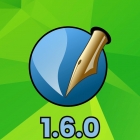
Scribus 1.6.0 更新是新年伊始的良好开端!
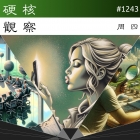
? Linux 内核开发者再次讨论从 C 语言转换为现代 C++ 语言
? 新设备允许用户用舌头滚动屏幕
? Brave Search 现在可以提供 AI 代码搜索
»
»

你无需在 Wayland 上放弃使用 Shutter!

? 苹果公司要求开发者将 Vision Pro 应用称为“空间计算应用”
? 多邻国裁掉翻译人员,用 AI 替代
? Linux 6.8 将提升 40% 多并发连接的 TCP 性能
»
»

这是历来重大的 Linux 内核发布之一,集大量修复和新增功能于一身。
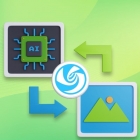
Deepin Linux 抢占 AI 创新权? 看起来是这样。

? OpenAI 称不用版权材料训练不出来 ChatGPT
? 美国去年仅净增长 700 个 IT 工作岗位
? 确保 AI 安全的理论仍未就绪
»
»

让我们尝试预测未来吧!
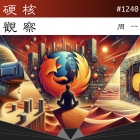
? Mozilla 已经将目光投向 Firefox 以外的领域
? PyPy 项目转移到 GitHub
? 随着人工智能的崛起,Web3 已不再受青睐
»
»

某天,我突发奇想 —— 是否能把 Git 存储库制作成一个 FUSE 文件系统,然后把所有的提交记录做成文件夹呢?
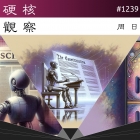
? DeepMind 制定 “机器人宪法”
? ChatGPT 正试图取代安卓手机上的谷歌助手应用
? 《科学》期刊将采用人工智能技术检查图像欺诈行为
»
»

Archcraft 是一个令人印象深刻的发行版,具有定制的开箱即用体验。

现代生活就像垃圾一样。如果你最喜欢的科技巨头停止重新发明轮子,会是什么景象呢?
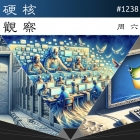
? 就连 Linus Torvalds 都觉得电子邮件补丁模式需要改变
? Windows 11 开始移除写字板
? 电信运营商使用一个弱得离谱的密码管理全球路由表
»
»
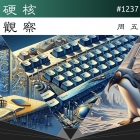
? Ubuntu 考虑停止提供源代码 ISO
? 微软给键盘加入了 Copilot 键
? 人工智能辅助生成的错误报告浪费了开发者的大量时间
»
»

回顾 2023 年的过山车之旅。

配备高效的剪贴板管理器,让你告别复制粘贴的烦恼,节省时间和精力。
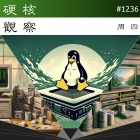
? 已知最古老的 MS-DOS 前身版本
? RHEL 10 将要求硬件支持 x86-64-v3,以支持更新的 CPU 特性
? DVD 复苏以防止电影消失
»
»

这些发行版在 2023 年引起了人们的关注!

了解在 Ubuntu 上安装 Docker 的两种官方方法。一种很简单,但可能会给你一个稍旧的版本。另一种方法稍显复杂,但能提供最新的稳定版本。
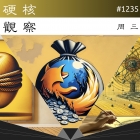
? 虽然 Firefox 市场份额继续下滑,但其 CEO 在涨薪
? Pulsar 准备继承死去的 Atom 编辑器
? 苹果公司年收入 850 亿美元的服务业务面临法律清算
»
»

你在 2023 年发现了哪些新的发布版本?有没有哪个发行版让你眼前一亮?

Gentoo 为硬件速度慢的用户准备了一份年终大礼。
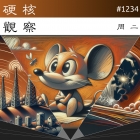
? 流量分析显示,6G 标准该准备了
? 最早的米老鼠形象终于进入公共领域
? NASA 因运送遗骸到月球上而被原住民部落叫停发射计划
»
»

在本系列的第五篇文章中,我们将继续介绍概率和统计中的概念。
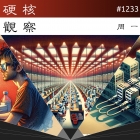
? 基于源代码的 Gentoo Linux 也将提供二进制
? 树莓派比 1978 年的 Cray-1 超级计算机快四倍以上
? AI 将成为你的同事,或者取代你的职位
»
»

“我们现在的许可证已无法满足需求,” 自由软件的先驱 Bruce Perens 如是说。

本文介绍如何使用 rpm-ostree 查找要添加到基于 ostree 的系统(例如 Silverblue 和 Kinoite)的应用。

? GitHub 正式发布 Copilot 编程助手
? 迪士尼、华纳、康卡斯特和派拉蒙等考虑合并
? 人们越来越少在社交媒体上发帖
»
»

想要换换口味,试试新的文件管理器吗?Xplorer 是一个值得关注的项目!

LCTT 译注:之前翻译发布的《Wayland 真的毁掉一切了吗?》引来了很多讨论,为了使讨论更全面,我也将该文所反驳的原文也翻译过来,供大家参考。

? 在 Linux 上,开发者可以将屏幕倾斜 22° 来编程
? 苹果公司正在将 Mac 打造成游戏天堂
? 微软准备推出下一代人工智能 PC
»
»

2023 年我们发掘出的那些被低估的精彩应用。

Rhino Linux 在 2023 年的最后一次更新中添加了一个很棒的功能。
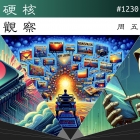
? 《纽约时报》起诉 OpenAI 和微软
? 攻击者利用未知硬件漏洞入侵 iPhone 长达四年
? 兆芯准备在 Linux 上为其 CPU 提供首选内核支持
»
»

有些人已经看过了这篇 Probonopd 批评 Wayland 的略有名气的文章。

? 新的员工福利:心理健康聊天机器人
? 美国教育部利用《我的世界》教数千名儿童学习计算机
? 苹果 Vision Pro 将于明年初发布,预期仅 50 万台
»
»

尽管 WordStar 4.0 看起来非常老旧,乔治·R·R·马丁却用它完成了《冰与火之歌》的创作。

? 研究人员利用《哈利·波特》研究 AI 的“遗忘”功能
? Windows 11 将可以通过 Windows Update 来修复系统
? 三个冒充 νρη 的 Chrome 浏览器恶意扩展被下载了 150 万次
»
»

浪潮信息与龙蜥系统有着紧密的交织和深度合作,它们共同在推动中国开源生态的未来。

Svelte 的开发者 Rich Harris 解释了为什么反其道而行,从 TypeScript 切换到 JavaScript 和 JSDoc。

? 谷歌因影响营收拒绝改变 Play 商店收费模式
? 《GTA 5》源代码在网上泄露
? 美国新法案要求 AI 公司披露受版权保护的训练数据
»
»

微软仍努力追寻着 VB 对于现称为 “群众开发者” 的人群所展现出的简洁与高效,尽管有很多尝试,一直难以复制成功。

darktable 4.6 更新看起来是一个出色的改进。
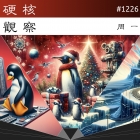
? Fedora 40 计划统一 /usr/bin 和 /usr/sbin
? Linus Torvalds 给内核开发者们放了年终假期
? 时隔两年,Enlightenment 0.26 发布
»
»

就算你是素食主义者或对海鲜有过敏反应,也值得试试 Fish ?

Qubes OS 4.2 更新改进了核心应用,还有更多好东西!
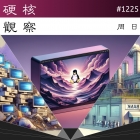
? 微软终止支持 Windows 10 将带来 4.8 亿公斤电子垃圾
? 将钱存到银行相当于增加了碳排放
? 开机闪屏 Plymouth 两年来首次更新
»
»

1983 年和 1993 年之间的变化显著,然而从那时候到现在,变化其实并不大。

? 微软准备放弃其 Windows VR 平台
? 苹果公司想让 AI 直接运行在 iPhone 本地
? Android 15 将可以告诉何时该更换电池
»
»

测试你的机器的 ML 工作负载能力!

当谷歌决定停止支持 Usenet,使得这个最早的社交网络平台又少了一个主要的入口。
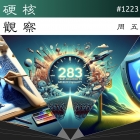
? Mozilla 认为 “可信类型” 是一项值得信赖的安全功能
? Midjourney V6 发布 alpha 版,支持内嵌文字
? IT 领域的女性还需要 283 年才能达到男女平等
»
»

它全面支持所有配备 M1 和 M2 芯片的 MacBook Air、MacBook Pro、Mac Mini、Mac Studio 和 iMac 系统。

12 月 16 日,在北京凛冽的寒风中,我们和小伙伴们举办了 LLUG 2023 • 北京场沙龙。
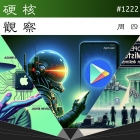
? 支持苹果芯片的 Fedora Asahi Remix 发布
? 英国司法部计划将 1 亿份历史遗嘱数字化然后销毁
? 谷歌 Play 商店准备推出远程卸载应用程序功能
»
»

VMware 的客户可能对背后的改变意图感到不快。

一个简单而优雅的 GUI 同步客户端,提供双向同步。

龙蜥操作系统在中国信息技术生态领域产生了重大影响,正在引领中国操作系统的全新篇章。

? Debian 将停止支持 32 位 x86
? 互联网档案馆称数字借阅是合理使用而非侵犯版权
? 德勤期待人工智能帮助避免未来大规模裁员
»
»

没有办法,微软热爱 Linux。
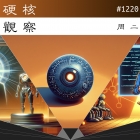
? OpenAI 探索用较低级的 AI 来监管更高级的 AI
? 微软发布小型 LLM Phi-2,性能超越更大的 Llama 2
? JSON 的创造者发布新编程语言 Misty
»
»

尽管渐进式网络应用(PWA)还在起步阶段,它们却已经影响着我们使用网络的方式。
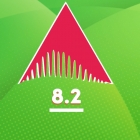
Ardour 的最新更新包添加了一些有用的功能和急需的修复。

在本系列的第四篇文章中,我们将开始学习 TensorFlow,这是一个非常强大的人工智能和机器学习库。

? 首个 Rust 编写的网络 PHY 驱动程序将登陆 Linux 6.8
? 字节跳动被指利用 OpenAI API 训练自己的 AI
? 谷歌群组明年终止支持新闻组(Usenet)
»
»

Vivaldi 6.5 是一个令人印象深刻的升级,必将助力提高生产效率,缩短工时!

不论云服务的开放程度如何,你都能为自己的环境选择合适的方式。

和我一起重温怀旧时光,回顾我使用 DG/UX UNIX 操作系统和数据通用公司的 AViiON 工作站和服务器的经历。

? 谷歌即将对 1% 的 Chrome 用户关闭第三方追踪
? DeepMind 用大模型发现了尚未解决的数学问题的解
? LinkedIn 放弃迁移至 Azure 的计划
»
»
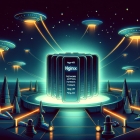
网络应用防火墙(WAF)是一种在应用层监控网络流量的应用程序。
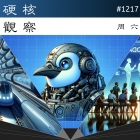
? FFmpeg 已经完成多线程功能开发
? Ubuntu 24.04 LTS 将默认启用帧指针
? Glibc 加入采用行为准则的开源项目行列
»
»
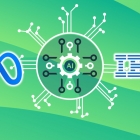
这样的联盟应该可以防止一家公司主宰人工智能进步。你怎么认为?

现在 Postfix 从 3.8.0 版本开始支持 RFC 中提出的设计。这个新增功能让你可以使用 DNS SRV 记录进行负载分配和自动配置。
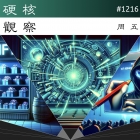
? 继收回 LXD 控制后,Canonical 将其更改为 AGPLv3 许可
? Threads 开始测试 ActivityPub 整合
? 恶意软件组织使用内存安全语言编写恶意软件
»
»

用这些技巧释放 sudo 的力量 ?

下面将引导你安装和使用 Jami,让你对其工作原理和你能从中获取的内容有更深入的理解。

? 1/4 的 Java 应用程序仍受 Log4Shell 影响
? OpenAI 的非营利部分去年收入仅 4.5 万美元
? 被博通收购的 VMware 将变成订阅制
»
»

Bash 并不是唯一可供选择的 Shell。

Armbian 最新版本提供了优化的新硬件支持和构建体验。
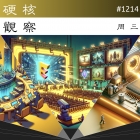
? 美国讨论数据政策以避免全球互联网碎片化
? AMD 认为可以通过芯片组件和代码解决功耗/发热问题
? E3 游戏展宣告死亡
»
»
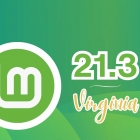
Linux Mint 21.3 beta 版发布啦!

经历了半年的全国巡游,Linux 爱好者沙龙走过了北京、上海、杭州、深圳、成都等五个城市,而在 2023 年的最后一个月,我们又再次回到了北京,与你在北京相见。

? Linux 内核直呼 666~
? 中国发布新一代超算“天河星逸”
? 英伟达今年投资了二十多家人工智能公司
»
»

2023 年最后的 Kali Linux 更新已经来临。

Vely 可让你在网络应用程序中利用 C 语言的强大功能。
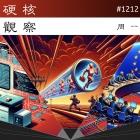
? Go 程序员大多使用 Linux 或 MacOS
? 欧盟就《人工智能法》的推出达成共识
? 让网速感觉更快的新标准 L4S
»
»

去中心化开源平台 PeerTube 大升级,这是一个很好的 YouTube 替代品。

在日本开源峰会中,Linux 和 Git 的创始人 Linus Torvalds 深入探讨了 Rust 在 Linux 中的应用、Linux 维护者压力问题,以及 AI 对 Linux 和开源开发未来的影响。
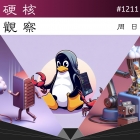
? Linus Torvalds 谈 Rust 和 AI 编程
? Meta 用 11 亿张用户照片训练其人工智能图像生成器
? 微软 DHCP 服务器软件被滥用来欺骗 DNS 记录
»
»

本文介绍了 Flathub 中可用的项目以及安装说明。

这款即将推出的 Zorin OS 17 能为你带来什么样的视觉盛宴?你有何感想?

? 人工智能聊天机器人被用来越狱其它人工智能
? 几乎所有密码管理器在安卓上会泄露凭证
? 苹果公司发布了可以发挥苹果芯片特性的机器学习框架
»
»

我了解到,如果你能找到适合你的方法,不管老师和其他学生怎么说,你都可以学到任何你感兴趣的开源技能。

现在,蓝屏死机的恐怖也将笼罩在 Linux 用户头上。

? 开机启动显示的徽标中可隐藏恶意代码
? 谷歌 Gemini 的早期印象并不好
? Fedora 40 新增直接启动统一内核镜像的功能
»
»
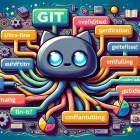
你有觉得哪些 Git 术语很让人困惑吗?
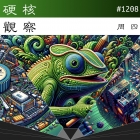
? LVFS 已为 Linux 用户提供超过 1 亿次固件更新
? openSUSE 新徽标投票还剩一周时间
? “逻辑量子比特”数量突破记录
»
»

Linux桌面的完美应用,用于轻松管理财务!

? Firefox 面临被踢出兼容性要求名单
? Facebook 停止发送 PGP 加密邮件
? 中国成为世界上第一个在水下部署商业数据中心的国家
»
»
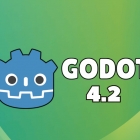
Godot 的又一次更新,其中包含了一些有用的更改,以更接近 Unreal、Unity 等专有引擎。

有一个热门话题,正在全国范围上火热进行中,那就是开放原子开源大赛。

这是你可以试用的一些最佳的隐私友好型网络浏览器!

它的影响至今仍能感受到。

? Linus Torvalds 为假期季做准备
? IBM 发布了 “实用规模” Heron 量子处理器
? Hugging Face 泄露的 API 令牌可以完全访问 LLaMA 2 仓库
»
»

在 Ubuntu 中拥有多个键盘布局并在它们之间切换非常简单。下面就教你怎么做。

? 苹果用 15 年完成了英特尔芯片替代
? 物理学家可能发现了大型量子计算机性能的硬限制
? 电子前线基金会发布《隐私优先》白皮书
»
»

从夏天到冬天,LLUG 线下活动再次回到北京,与你相遇在北京。
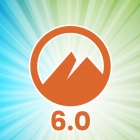
Cinnamon 6.0 与 Wayland 会话听起来很有趣!

? Chrome 还有打击广告拦截器的下一个武器
? Java 尝试使用多线程的新方法
? 研究称 GPT-4 没有通过图灵测试
»
»
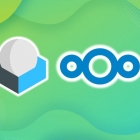
Roundcube 现在正与 Nextcloud 合作以迎接未来。

在本系列的第三篇文章中,我们将了解更多的矩阵操作,同时再介绍几个人工智能 Python 库。

? 巴西城市颁布由 ChatGPT 编写的法令
? 研究人员量化生成人工智能图像的碳足迹
? Servo 浏览器引擎继续走嵌入式友好之路
»
»

通过定义目标并创建指标,衡量你的社区活动的成效。
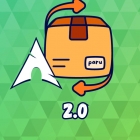
经过了一段时间的等待,Paru 2.0 版本终于发布了。
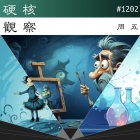
? 北京互联网法院裁决 AI 生成图片拥有版权
? DeepMind 新 AI 工具帮助创造出逾 700 种新材料
? 研究人员通过重复单词迫使 ChatGPT 吐出训练素材
»
»
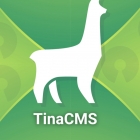
欢迎这个项目的加入,使我们的开源世界更加丰富。

我不断从他人那里听说他们觉得 Git 分支的操作方式违反直觉。

GNOME 上的 Matrix 消息应用得到升级,使用了 GTK4、Rust SDK 等新技术。

? 美国实现芯片独立还需十到二十年
? 全球科学研究正一分为二
? BBC BASIC 回来了
»
»

LibreOffice 当然很棒,但是如果你想找一些其它的替代品,那这里有一些。

? 微软开源树莓派使用的 RTOS 固件,树莓派软件有望完全开源
? RHEL 10 将正式移除 X.org
? DeepMind 首次让人工智能代理具备社会学习能力
»
»

这款视频转换工具带来了急需的改进。

微软,你在 GitHub 上的行为究竟是何目的?
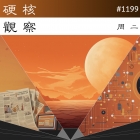
? 把名字写到宇宙飞船上,它将在 2030 年到达木星
? AWS 正在试验一种可以解决关键量子计算问题的芯片
? 151 年之后,《大众科学》将不再提供杂志
»
»

玩得开心,安德森先生!

mkosi 是一个轻量级工具,用于从发行版软件包构建镜像。
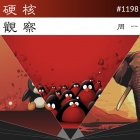
? Ubuntu Budgie 准备转而采用 Xfce
? KDE Plasma 的 Wayland 支持仅剩一个阻碍
? PHP 8.0 生命终结
»
»

如果在 Arch Linux 中安装软件包时遇到 “target not found” 错误,你可以采取以下措施。

并不是,不过 “功能源代码许可证” 却更进一步混淆了开源许可证的界限。

? Debian 的 MIPS64EL 架构面临放弃
? Blender 遭遇 DDoS 攻击
? 四年后,OpenMandriva Lx 5.0 发布
»
»

就在昨日,LLUG 爱好者沙龙活动杭州场在杭州未来科技城国际人才园成功举办。

这是一款具有良好的外观和感觉,独立的不可变发行版。

VSCodium 是微软 VS Code 真正开源的版本,它可以轻松安装在 Fedora 上。具体方法如下。
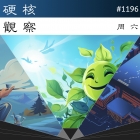
? 定了!GIMP 3.0 计划在 2024 年 5 月发布
? 中国申威 SW26010 Pro CPU 性能比前代产品提高四倍
? 研究发现植物周末的光合作用率更高
»
»

使用一些顶级开源密码管理器,确保你的登录凭证安全无虞。

在这篇基本命令行教程中,你将学习在 Linux 终端重命名文件和目录的各种方法。

? 特斯拉开源其跑车的所有设计和工程资源
? ChatGPT 生成虚假数据集以支持科学假说
? Cloudflare 屏蔽其以太坊网关上的滥用内容
»
»
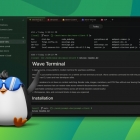
这是 Linux 终端的 VS Code,有可能在年轻一代编程者和 Linux 用户中流行起来。
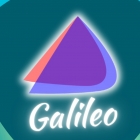
基于 Arch Linux 的发行版 EndeavourOS 在其最新版本中进行了一些有趣的变更。

? 苹果公司的 Objective-C 似乎已经落幕?
? 谷歌对使用了广告拦截器的浏览器延迟加载 YouTube 视频
? 英伟达第三财季营收增长三倍
»
»

Fedora 39 通过 SSSD 和 FreeIPA 为集中管理的用户开启了 FIDO2 认证功能。此篇文章将指导你如何进行配置和启用该功能。

? Rust 有了一个制定规范的团队,但不负责定义该语言
? Firefox 120 将支持新的隐私控制请求头 Sec-GPC
? 波兰法院地板下发现大型加密矿机
»
»

在本次 Linux 黑话解释系列的这一篇,我们会一起来探索 Linux 中的 Super 键(或称其为 Meta 键)。

Arch Linux 上的蓝牙无法工作?以下是对我有用的方法,以及解决 Arch 上蓝牙问题的其它技巧。

? 商业航班遭遇 “难以想象” 的 GPS 攻击
? 字节跳动使用 AI 来自动调优 Linux 内核
? 苹果公司准备给 MacBook 装备 5G 蜂窝网络
»
»
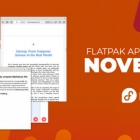
本文介绍了 Flathub 中可用的项目以及安装说明。

就在这个周末, LLUG(Linux 爱好者沙龙)来到杭州。








































































































































































































